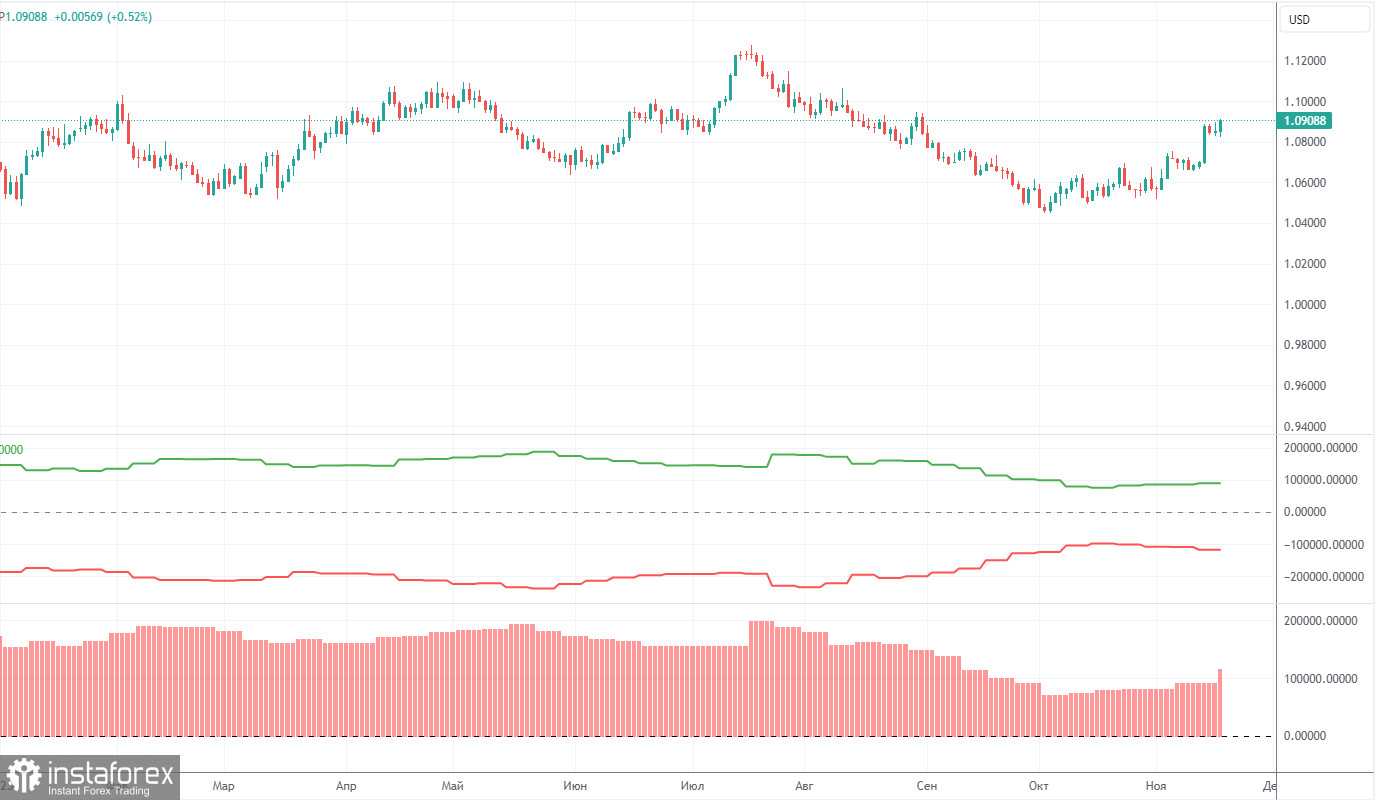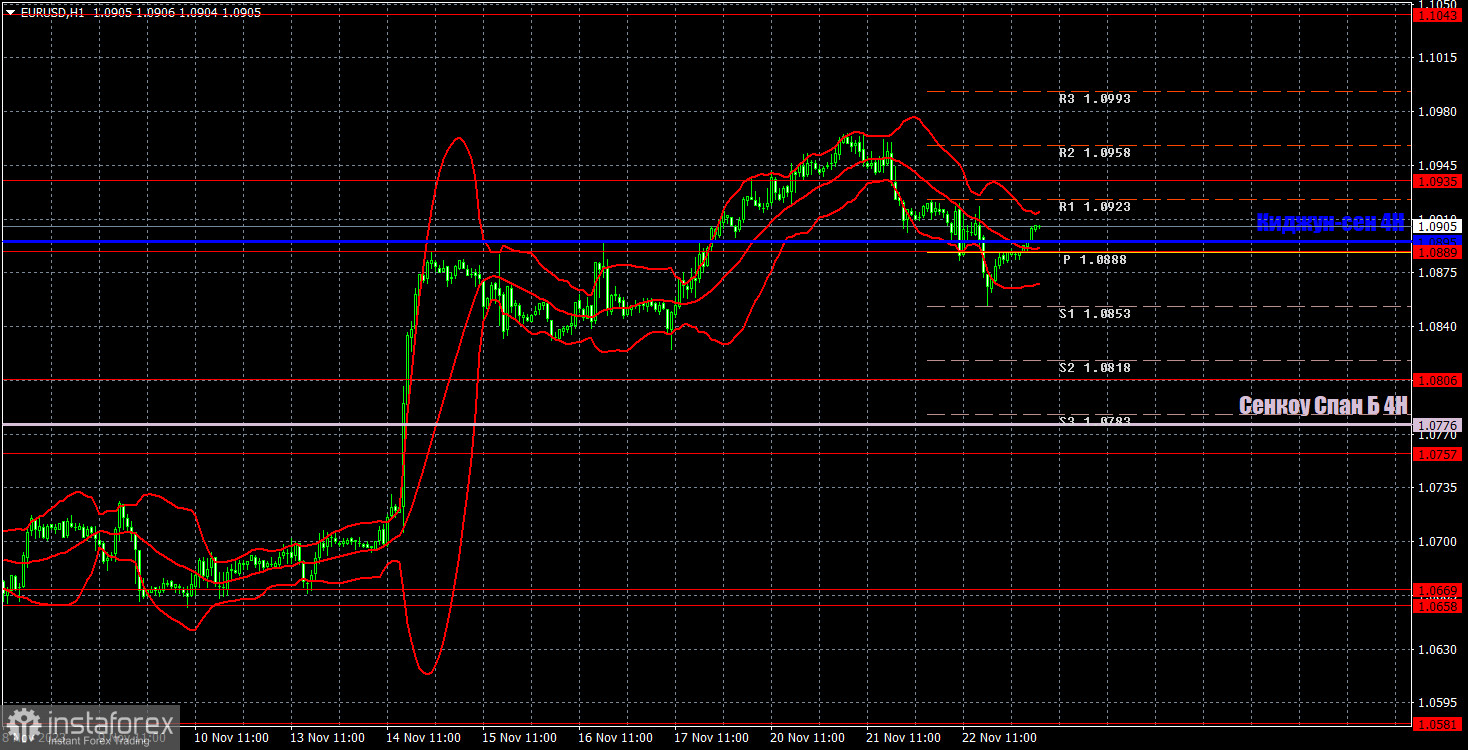Analysis of EUR/USD 5M

EUR/USD continued its corrective movement on Wednesday. The drop was modest, although there was a fairly good segment of decline at the beginning of the U.S. trading session. However, it quickly ended, and by the end of the day, the pair lost only a few dozen points. Volatility remains low, and the dollar is reluctantly rising. The euro did not have any particular reasons to rise on Wednesday. All the most important reports of the day came from the U.S., and at least two out of three turned out to be weaker than expected. The most disappointing report was on the orders for durable goods. Despite expectations of a 3% fall, in reality, they dropped even more. The consumer sentiment index from the University of Michigan also turned out to be weak. But the dollar still managed to edge up, which is already good.
All the trading signals were formed in the range of 1.0889-1.0895. The pair bounced twice from the top of this range, and once it broke through it. In the first and second cases, the price could not move in the intended direction even by 15 points, and in the third case, it did, so investors could open two trades during the day. One closed at the Stop Loss at breakeven, and the other at a small loss. Another not very successful day in terms of trading.
COT report:

On Friday, a new COT report for November 7 was released. Over the past 12 months, the COT report data has been consistent with what's happening in the market. The net position of large traders (the second indicator) began to rise back in September 2022, roughly at the same time that the euro started to rise. In the first half of 2023, the net position hardly increased, but the euro remained relatively high during this period. Only in the last three months, we have seen a decline in the euro and a drop in the net position, as we anticipated. Currently, the net position of non-commercial traders is still bullish and this trend is likely to lose momentum soon.
We have previously noted that the red and green lines have moved significantly apart from each other, which often precedes the end of a trend. This configuration persisted for over half a year, but ultimately, the lines have started moving closer to each other. Therefore, we still stick to the scenario that the upward trend is over. During the last reporting week, the number of long positions for the "non-commercial" group increased by 1,700, while the number of short positions fell by 2,000. Consequently, the net position increased by 3,700. The number of BUY contracts is still higher than the number of SELL contracts among non-commercial traders by 89,000. In principle, it is now evident even without COT reports that the euro is set to extend its weakness. However, the corrective phase has not yet ended.
Analysis of EUR/USD 1H

On the 1-hour chart, the pair exhibited another corrective phase. Two out of the five phases in the current correction were triggered by weak U.S. reports, and it is quite difficult to justify the current upward movement. For now, we can say that the recent reports have been supporting the euro. Nonetheless, it seems like the market is ready to buy for no reason. We need to wait for the pair to breach the Senkou Span B and Kijun-sen lines in order to identify the recommencement of the downtrend in the medium-term.
On November 23, we highlight the following levels for trading: 1.0530, 1.0581, 1.0658-1.0669, 1.0757, 1.0806, 1.0889, 1.0935, 1.1012, 1.1092, 1.1137, as well as the Senkou Span B (1.0776) and Kijun-sen (1.0895) lines. The Ichimoku indicator lines can shift during the day, so this should be taken into account when identifying trading signals. There are also auxiliary support and resistance levels, but signals are not formed near them. Signals can be "bounces" and "breakouts" of extreme levels and lines. Don't forget to set a breakeven Stop Loss if the price has moved in the right direction by 15 pips. This will protect against potential losses if the signal turns out to be false.
In Germany and the Eurozone, the service and manufacturing PMI data for November will be released on Thursday. This may be interesting if the actual values deviate from the forecasts by more than 1 point. No interesting events planned in America.
Description of the chart:
Support and resistance levels are thick red lines near which the trend may end. They do not provide trading signals;
The Kijun-sen and Senkou Span B lines are the lines of the Ichimoku indicator, plotted to the 1H timeframe from the 4H one. They provide trading signals;
Extreme levels are thin red lines from which the price bounced earlier. They provide trading signals;
Yellow lines are trend lines, trend channels, and any other technical patterns;
Indicator 1 on the COT charts is the net position size for each category of traders;
Indicator 2 on the COT charts is the net position size for the Non-commercial group.
 English
English 
 Русский
Русский Bahasa Indonesia
Bahasa Indonesia Bahasa Malay
Bahasa Malay ไทย
ไทย Español
Español Deutsch
Deutsch Български
Български Français
Français Tiếng Việt
Tiếng Việt 中文
中文 বাংলা
বাংলা हिन्दी
हिन्दी Čeština
Čeština Українська
Українська Română
Română

